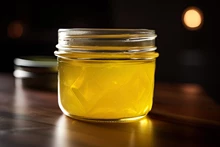
Buffalo farming is an important occupation for many people in the Indian subcontinent. There are at least 130 million domestic buffaloes all over the world and more than 95.8 percent of this population is found in Asia. Total buffalo population in India is over 97.9 million head in 2003, representing 56.5 percent of the world population.
People in India and some other Asian countries depend on buffalo farming than on raising any other domestic animal. The buffaloes are especially very suitable for tilling rice fields, and their milk is richer in fat and protein than that of dairy cattle.

Breeds of Buffaloes
Indian buffaloes are required for necessary supply of milk nowadays and they yield nearly 3 times the maximum amount of milk as cows. More than half of the total milk produced (55%) in the country is contributed by the 47.22 million milch buffaloes, where as the 57.0 million cows contribute only 45% of the total milk yield. Indian Buffaloes are water buffaloes. There are around ten native customary breeds of buffaloes, which are well known for their milking qualities.
The buffalo species originated in India. The present day domesticated buffaloes are the descendants of Bos arni found in wild state even today in north-eastern parts of India specially Assam and the surrounding areas. The buffaloes existence ordinarily classified into watercourse ad swamp varieties although each one known as mammal genus bublis. Most of the animals in India re river type though swamp type are also found in certain parts of the country especially in eastern parts of India.
India is taken into account because of the home tract of a number of the simplest buffalo breeds. Because of preference of buffaloes for milk, many she buffaloes from the breeding tract are moved to the thickly populated urban and industrial centre for meeting the milk requirements of this population. Here generally they are slaughtered after completion of one or two lactation. Their progenies allowed to die due to neglect and thus no replacement of superior germplasm is possible.

Bhadawari
________________________________________
-
Agra and Etawahdistrict of Uttar Pradesh and Gwalior district of Madhya Pradesh.
-
The body is medium size and wedge shaped. The head is comparatively small, the legs are short and stout, and the hooves are black. The hind quarters are uniform and higher than the forequarter.
-
The breed is peculiar for having usually light or copper coloured body. Eye lids are generally copper or light brown colour.
-
Same as surti buffaloes, two white lines ‘Chevron’ are present at the lower side of the neck.
-
Horns are black, curling slightly outward, downward before running backward parallel and close to neck, and finally turning upward.
-
The average milk yield is 800 to 100 kg.
-
The bullocks can tolerate high heat and good drought animal.
-
The fat content varies from 6 to 12.5 per cent. This breed is an efficient converter of coarse feed into butterfat and is known for its high butter fat content.

Murrah
________________________________________
-
It is the most important breed of buffaloes whose home is Rohtak, Hisar and Jindof Haryana and Nabhaand Patiala districts of Punjab.
-
Synonyms : Delhi, Kundi, Kali
-
Extremities are seen sometimes and the colouris usually jet black with white markings on tail.
-
The tightly curved horn is an important character of this breed.
-
The body size is massive, neck and head are comparatively long.
-
Head of females is short, fine and clear cut.
-
Hind quarters are drooping along with broad and fore hips.
-
This breed of buffalo cows are one of the most efficient milk and butter fat producers in India.
-
Butter fat content is 7% Average lactation yield is vary from 1500-2500 kg the average milk yield is 6.8 kg/day.
-
Even as much as 19.1 kg/day is provided by a few individual animals.
-
Age at first calving is 45-50 months and inter calving period is 450-500 days.

These are large animals found in their pure kind in Gir forests. The breeding tract of this breed is kutch, and Jamnagar districts of Gujarat.
-
The head and neck are large. The forehead is extremely outstanding, wide with a small depression within the middle.
-
The horns are significant, inclined to droop at all sides of the neck and so turning up at purpose, however les tightly curving than in Murrah (drooping horns).
-
The color is typically black.
-
The average milk yield is 100 to 1200 kilogram. These animals are largely maintinedby ancient breeders referred to as Maldharis, World Health Organization are nomads.
-
The bullocks are significant and used for tilling and trucking.

This breed is found in Sutlej valley in Ferozpur district of Punjab and within the Sahiwal district of Pakistan. (bred around Ravi river)
-
Usually the color is black with white marking on forehead, face, muzzle, legs and tail.
-
The most desired character of the female is that the possession of white markings.
-
The head is elongate, bulging at high and depressed between eyes. The muzzle is ok.
-
The frame is medium sized.
-
The peculiarity of the breed is that the wall eyes.
-
The horns are tiny and whorled tightly. The neck is long, skinny and fine.
-
The milk yield is 1500-1850 kilogram per lactation and also the put down birthing amount is 500- 550 days.
-
Age initially birthing is 45-50 months.

-
Mehsana could be a dairy farm breed of buffalo found in Mehsana city in Gujarat and adjacent Maharashtra state.
-
Body is generally black; many animals areblack-brown in color.
-
The breed is meant to possess been evolved out of crossbreeding between the Surtiand also the

-
The breeding tract of this breed is Kaira and Baroda district of Gujarat.
-
Coat color varies from rusty brown to silver-grey. Skin is black or brown.
-
The body is well formed and medium sized; the barrel is wedge formed.
-
The head is long with distinguished eyes.
-
The horns are reaping hook formed, moderately long and flat.
-
The color is black or brown
-
The peculiarity of the breed is 2 white collars, one around the jaw and also the alternative at the cut of meat.
-
The milk yield ranges from 900 to 1300 metric weight unit.
-
The age initially birthing is 40-50 months with an intercalvingamount of 400-500 days.
-
The peculiarity of this breed is extremely high fat share in milk (8-12per cent).










